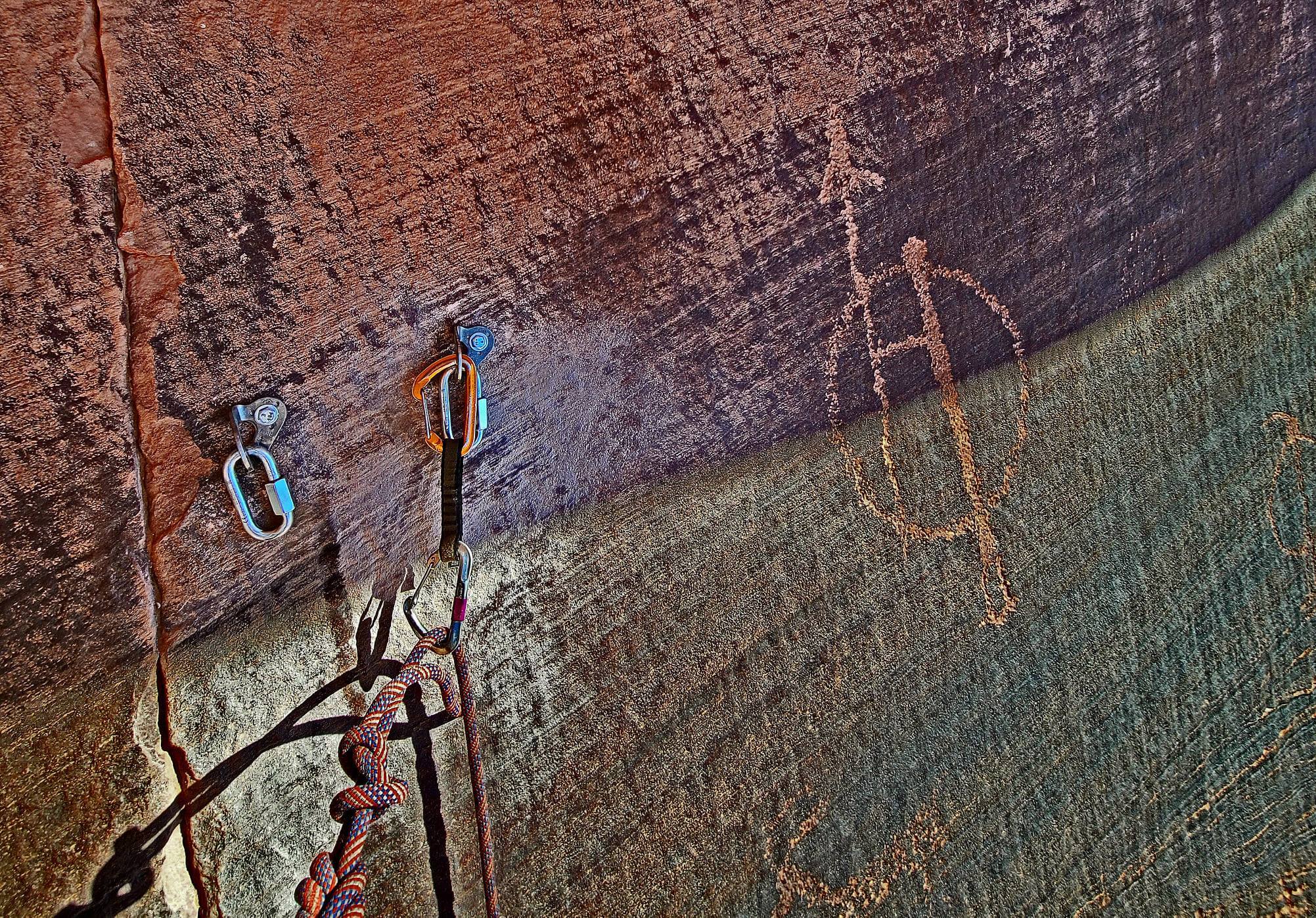Some information may be outdated.
“I’m greatly disturbed, dismayed, and lastly, saddened by the recent vandalism that has occurred, both at the Birthing Rock and the Sunshine Wall,” said Commissioner Trisha Hedin at the May 4th Grand County Commission meeting.
A recent rock climbing route bolted over a petroglyph panel at the Sunshine Wall and racist messages scratched over the Birthing Rock panel have the Moab community mourning the damage of these sites and questioning how to prevent further incidents like these.
“I really encourage our commission and the Travel Council, to think about providing extensive education to our citizens and to visitors to respect both our cultural and natural resources,” Hedin said at the May 4 meeting.
Elaine Gizler, director of the Moab Area Travel Council, said at the same meeting that she had removed all references to specific rock art sites from the Travel Council’s website, www.discovermoab.com, after she heard about the vandalism. She was passionate in her condemnation of the vandals.
“I find it disgusting that we would have people come here and deface these historical pieces of art,” she said. She reached out immediately to a filmmaker who has worked with the Travel Council before, and filming for a short educational video has already taken place. Gizler said they interviewed a former Bureau of Land Management archaeologist, a local business owner, and a representative from the nonprofit Utah Diné Bikéyah.
In an April 30 interview on local radio station KZMU, former Bureau of Land Management archaeologist Don Montoya discussed the damage to the Birthing Rock. He said conservators consulted tribes and have used minimally invasive techniques to complete initial restoration steps. Montoya emphasized the need to defer to tribes in caring for rock art sites.
“We have a tendency with rock art and archaeological sites to disassociate the ancient sites from modern Native people today,” he said. “This is more their heritage than it is ours.”
Montoya said a lot of vandalism stems from ignorance, but he also acknowledged the persistence of “bad actors” who will, for example, jump over fences and ignore informational signs, as at the Birthing Rock, to create damage. He also noted that though vandalism has been a problem in the past, he has not seen overtly racist messages written on petroglyphs before.
“We’re approaching a crisis, and the crisis isn’t necessarily rock art vandalism… it’s symptomatic of the social unrest that we have,” Montoya said of the toxic messages. “We need to address the illness; treat the symptoms, of course, but the symptoms are not the cause.”
Gizler called for stronger educational efforts at the federal level.
“I do believe that we need an educational program that’s going to come out of Washington D.C. to talk to people, to teach them how to recreate responsibly,” she said. She asked the commission to draft a letter supporting a national program to educate the public on how to recreate responsibly.
Nation-wide programs and slogans exist: land management agencies, particularly the National Park Service, have promoted respectful recreation for decades. The seven outdoor ethics principles of Leave No Trace were developed in 1990 by the Forest Service and the National Outdoor Leadership School; the Leave No Trace Center for Outdoor Ethics became a nonprofit in 1994.
However, Gizler called for a stronger national educational program similar to the creation of Smokey Bear or support of national anti-smoking campaigns.
“We need a national program that’s going to talk about education, how to recreate responsibly, no matter where you are—in an urban area, rural area, public land; wherever you are,” she said.
Appreciate the coverage? Help keep local news alive.
Chip in to support the Moab Sun News.





